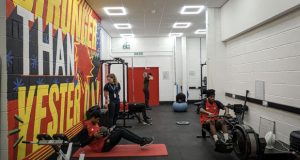- 2N white paper highlights three main trends that will shape the industry: the recovery of the construction sector from the pandemic, the fixed lines, 2G and 3G phase-out and changes to accessibility standards
- Report includes a guide to helps lift manufacturers, service and maintenance providers professionals plan best-in-class lift projects
The lifts industry in Europe is on the cusp of substantial change, according to a new white paper from 2N, the global leader in IP intercom systems and specialist in emergency lift communications.
 Entitled Emergency Lift Communications: A guide for lift manufacturers, service & maintenance providers, the white paper identifies the three most important trends which will fuel the rapid growth of the lifts industry over the next few years – and which will also have a major impact on emergency communication in lifts:
Entitled Emergency Lift Communications: A guide for lift manufacturers, service & maintenance providers, the white paper identifies the three most important trends which will fuel the rapid growth of the lifts industry over the next few years – and which will also have a major impact on emergency communication in lifts:
1. The recovery of the construction sector: The construction sector is recovering well from the pandemic, with confidence rising very significantly in virtually all EU countries. Particularly strong growth is expected in the non-residential sector, both in terms of new construction and building renovation.
2. The PSTN, 2G and 3G phase-out: In most countries, the phase-out of 2G and 3G, and the transition to the 4G cellular network, will happen by the end of 2025. This will require a migration to new technologies because in many cases, if it is not carried out in time, the emergency communication from the lift will simply stop working.
3. Upgrading accessibility standards: This year, the European Committee for Standardisation on Lifts, Escalators and Moving Walkways (CEN TC10) will amend standards to improve the accessibility of lifts for people with disabilities. The details are still being finalised, but it will require two-way emergency communication to take into account various types and levels of sensory abilities amongst passengers. This could, potentially, require building owners to consider Voice over Internet Protocol (VoIP) technology for emergency communication in their lifts.
The white paper also includes a practical guide for lift service and maintenance providers, which considers the three main scenarios for lift communications upgrades – retrofit, modular solutions and full IP installations – and the options for the remote management of lift projects.
Pavel Kotek, Lift Sales Director at 2N, said: “The lifts industry is in a period of significant change. The good news for lift service and maintenance providers is that IP technology can help ensure a smooth and ultimately positive transition – as well as offering greater efficiency, reliability and cost savings for their customers.”
2N’s white paper is available here: Emergency Lift Communications: A guide for lift manufacturers, service & maintenance providers
-ends-
To have your industry news published in the pages of FMJ’s news section, Month in FM, and here online on fmj.co.uk, please send your news and image to Danny Grange danny.grange@kpmmedia.co.uk
The view or information contained within these unedited press releases, are that of the company producing it and not necessary the views of kpm.




